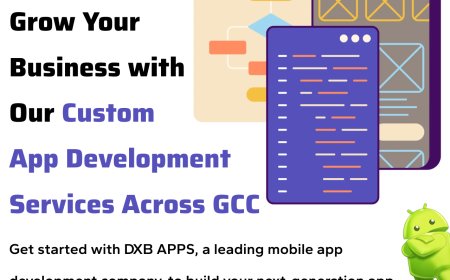Top 7 MongoDB Features That Will Transform Your Backend Development in 2026
Discover the top MongoDB features that help build modern, resilient apps. Explore its new performance improvements and advanced scalability options.

Just when you think you’ve seen every trick in the NoSQL playbook, MongoDB drops a suite of new features that change the backend game for developers everywhere. In 2026, this powerhouse isn’t just for simple document stores or “quick hacks”. It’s packing advanced tools that can scale as big (or fast) as anything in the relational world. Whether you’re running a startup MVP, a global SaaS, or just want painless cloud-native scale, these top MongoDB features deliver real-world value.
Ready to ditch database limitations and build with total freedom? Let’s break down what matters most next year with pro tips you can use.
MongoDB for Backend Development: How it Helps
MongoDB is a modern, document-oriented database widely used for backend development because it stores data in flexible JSON-like documents instead of rigid tables. This means developers can easily manage, query, and update complex or rapidly changing datasets without complicated migrations or fixed schemas. Its architecture allows for quick scaling, high performance, and seamless integration with cloud services, making it ideal for building agile, scalable backend systems in web, mobile, and AI-powered applications.
Now, let’s explore 7 key MongoDB features that will make it slay the database landscape in 2026.
1. Flexible and Evolving Document Model
At the heart of MongoDB for backend development is its unrivaled document-based data model. Gone are the days of wrestling with strict schemas:
-
Store, nest, and change data as you need without experiencing downtime for migrations and angry devs fixing broken rows.
-
Unstructured, semi-structured, or evolving structures all live in one collection without hassle.
-
New fields, arrays, objects, or embedded records? You simply add them. MongoDB’s flexibility speeds up development and iteration cycles, perfect for fast-moving teams or feature-rich startups.
This is one of the best MongoDB features for developers who know their data is going to grow, change, and scale with user demand.
2. Next-Level Sharding and Horizontal Scalability
For years, MongoDB scalability features have led the NoSQL pack. But it’s evolved:
-
Sharding lets you partition data across an unlimited number of servers. Each “shard” holds just a chunk of your collection, so reads and writes scale out horizontally.
-
In 2026, MongoDB now support smarter sharding with features like zone sharding, letting you pin data to specific regions or meet compliance easily (think GDPR-friendly architectures).
-
High-volume apps like IoT, analytics, and eCommerce lean on this to grow. Need to add 500K users in Asia overnight? Just add a node, rebalance, and keep moving.
Dev teams love the efficiency: global apps, burst traffic, and distributed architectures turn from “nightmare” to “no problem” because of these MongoDB scalability features.
3. Performance Improvements: Indexing, Query Engine, and Elastic Search
If your image of MongoDB is “okay, but is it fast?” There is good news. MongoDB performance improvements in recent versions are huge.
-
Express query engine and new aggregation stages (in MongoDB 8+) deliver double-digit reductions in latency for single-index queries and common workloads.
-
Indexing on anything: Fields, embedded arrays, even geospatial or full-text data, you can index on anything. This means blazing fast lookups, even as data grows.
-
Elastic Search integration: Workloads that need smart search, AI chatbots, or recommendation engines get integrated with semantic and vector search, all in your existing MongoDB cluster. No more data duplication, syncing, or bolted-on search servers.
You get performance, advanced search, and analytics, right at the source.
4. Real-time Change Streams and Advanced Aggregations
Modern users expect live notifications, real-time dashboards, and instant updates. MongoDB’s answer? Change Streams and the world-class Aggregation Framework:
-
Change Streams give you a built-in, event-driven pipeline for watching data as it changes. Build feeds, mobile alerts, or analytics without polling or hacks.
-
Aggregation Pipelines let you slice, dice, join, and transform monster datasets in-database, so your servers do less heavy lifting.
Enterprise dashboards, reporting, and push-driven apps are all easier with these best MongoDB features for developers.
5. ACID Transactions and Tunable Consistency
Think NoSQL can’t do transactions? Not anymore. MongoDB has full multi-document ACID transactions, so you can safely update multiple records in a single atomic operation, just like a traditional RDBMS.
-
Tunable consistency: Set read/write concerns, so you can choose availability, speed, or strict reliability for different operations.
-
Critical for fintech, logistics, or any workflow where relationships matter, this feature means using MongoDB for scalable backend systems is no longer a compromise. It’s a genuine alternative to SQL.
Now you can trust MongoDB with your most important data, not just “non-critical extras”.
6. Enterprise Security, Encryption, and Compliance
No more “NoSQL means no security.” 2026-era MongoDB Database Development Services offer advanced protections:
-
Field-Level Encryption, RBAC (role-based access), robust auditing, and even queryable encryption.
-
Geo-sharding, audit logs, and compliance controls help with HIPAA, GDPR, SOC2, and all the latest global standards.
-
Cloud-native deployments (especially MongoDB Atlas) make securing, backing up, and monitoring data painless for even the biggest teams.
For any product that handles sensitive data or operates globally, these security options mean MongoDB is finally enterprise-ready.
7. Generative AI and Vector Search Integration
Here’s where MongoDB makes headlines. In 2026, integrating AI features is now a first-class citizen, not an afterthought:
-
Vector and semantic search are baked in, so you can enable smarter chatbots, context-based recommendations, and semantic content discovery without leaving the core database.
-
Store and query embeddings, support Retrieval-Augmented Generation (RAG), and manage next-gen ML data flows, with native pipelines.
-
MongoDB Database Development Services are now shipping AI-enabled apps, from real-time fraud detection to personalized UX, all using the latest built-in database features.
Every AI/ML or data science team should check out how using MongoDB for scalable backend systems can replace custom search infra and cut dev cycles in half.
Let’s not forget the platform revolution. Running MongoDB for backend development on MongoDB Atlas brings:
-
Auto-scaling, serverless clusters
-
One-click backups and global distribution
-
Transparent patching, monitoring, and cost control
It’s these “invisible features” that let startups and enterprises trust MongoDB to just work, even under pressure.
But why are these the best MongoDB features for developers? Let’s check out. If you’re serious about backend dev in 2026, these new MongoDB features will give you:
-
Schema flexibility that handles whatever your product throws at it
-
High-throughput scaling for global traffic (without ops drama)
-
Real-time data feeds, search, and analytics, both native and fast
-
Security, compliance, and cloud-proven scale
-
Advanced AI and search integrations to future-proof your app
Modern projects aren’t monoliths. They move fast, reach millions, and change weekly. Leveraging the best MongoDB features for developers will let you dream and deliver, without hitting “database walls.”
Partner Spotlight: MongoDB Database Development Services
Not every team wants to DIY their data stack. Ask a proven company like Unified Infotech for the following:
-
Schema design and query tuning
-
Sharding, zones, and performance optimization
-
Automated backup, security, and cloud ops
-
Integrating AI/search tools with existing applications
MongoDB development and consulting company specialists make migration, scaling, and future-proofing painless. For advanced projects, look for firms with scalable MongoDB services that handle both the nuts-and-bolts and cutting-edge features.
Conclusion
In 2026, MongoDB has moved way beyond its NoSQL roots. This is the platform that now powers mobile, web, serverless, AI, and just about every use case where speed, scale, and feature depth matter.
So, stop seeing Mongo as just “another JSON database.” Lean into its full stack of features, and unlock backend development possibilities you never thought were this close to turnkey.










































